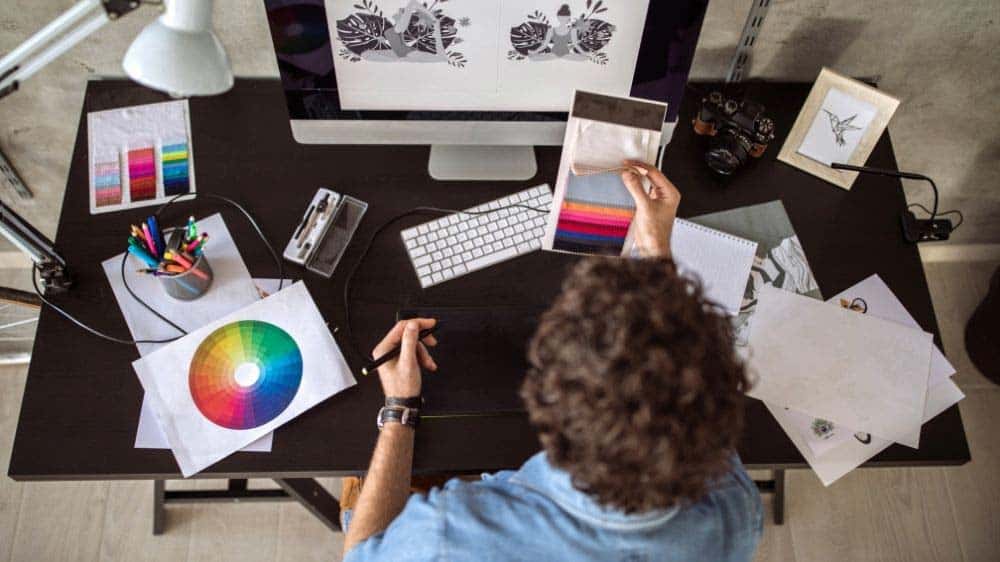Digital Art Vs Real Art - a debate that's been going on for a while now. Some argue that digital art is not real art, while others believe that it is a form of art just like any other. As someone who appreciates all forms of art, I believe that digital art is just as real as traditional art. In fact, it has its own unique set of benefits and challenges. In this post, I'll be discussing the pros and cons of digital art compared to traditional art, and provide some tips and ideas for those who want to give it a try.
Pros of Digital Art
The biggest advantage of digital art is the ease of use and convenience it offers. You don't need an entire studio space to create something beautiful. All you need is a computer and a tablet. The digital canvas is limitless, and you can experiment with different techniques and colors without having to worry about running out of supplies. Additionally, you can delete and start over as many times as you want without wasting any paper or paint.
1. No Mess
Digital art is mess-free. You don't have to worry about paint or ink stains on your clothes or furniture, and there are no brushes to clean. The only thing you need to clean is your tablet screen, which is easy to do with a microfiber cloth.

2. Easy to Share
Sharing your artwork is easy with digital art. You can easily upload it to social media, print it out, or even sell it online. You don't have to worry about shipping costs or packing materials like you would with traditional art.

3. Time-Saving
Digital art is also time-saving. You can work on your artwork whenever and wherever you want, without having to wait for paint or ink to dry. Additionally, you can easily copy and paste elements from one artwork to another, or even use presets and brushes to speed up the process.
Cons of Digital Art
Despite its advantages, there are some downsides to digital art as well.
1. Cost
The initial cost of purchasing a tablet and software can be expensive. Unlike traditional art where you can start with a $5 sketchbook and a 50 cent pencil, digital art requires specialized equipment that can be out of reach for some artists.

2. Learning Curve
Learning how to use digital software can also be challenging, especially for those who are used to traditional methods. There are many features and tools to navigate, which can be overwhelming at first. Additionally, you need a good understanding of color theory and composition to create something visually pleasing.
3. Lack of Texture
One of the greatest disadvantages of digital art is the lack of texture. With traditional methods, you can physically feel the paint or ink on the paper. Digital art, on the other hand, can feel flat and lifeless without the added texture.
Tips and Ideas for Digital Art
Despite its disadvantages, digital art is a great medium for artists to explore. If you're interested in giving it a try, here are some tips and ideas to get you started.
1. Experiment with Layers
The use of layers is one of the most important features of digital art. They allow you to work on different parts of your artwork without affecting the rest. Experiment with different layer modes and transparency settings to create unique effects.

2. Use Digital Brushes and Presets
One of the biggest advantages of digital art is the ability to use custom brushes and presets. These can speed up your workflow and help you achieve certain effects quickly. Spend some time exploring the different options and find the ones that work best for you.
3. Combine Digital and Traditional Methods
Don't be afraid to combine digital and traditional methods. You can create a pencil sketch on paper and then scan it into your computer to add color and texture. This allows you to maintain the texture of traditional art while enjoying the flexibility and convenience of digital art.
4. Practice, Practice, Practice
Like any other art form, digital art requires practice. Don't be discouraged if your first few pieces don't turn out the way you want them to. Keep practicing and experimenting, and you'll soon find your own style and voice.
In conclusion, digital art is just as real as traditional art. It has its own unique set of benefits and challenges, and requires a different set of skills. If you're interested in exploring digital art, don't be afraid to give it a try. With the right tools, knowledge, and practice, you can create something beautiful and unique that showcases your artistic talent.
Read more articles about Digital Art Vs Real Art